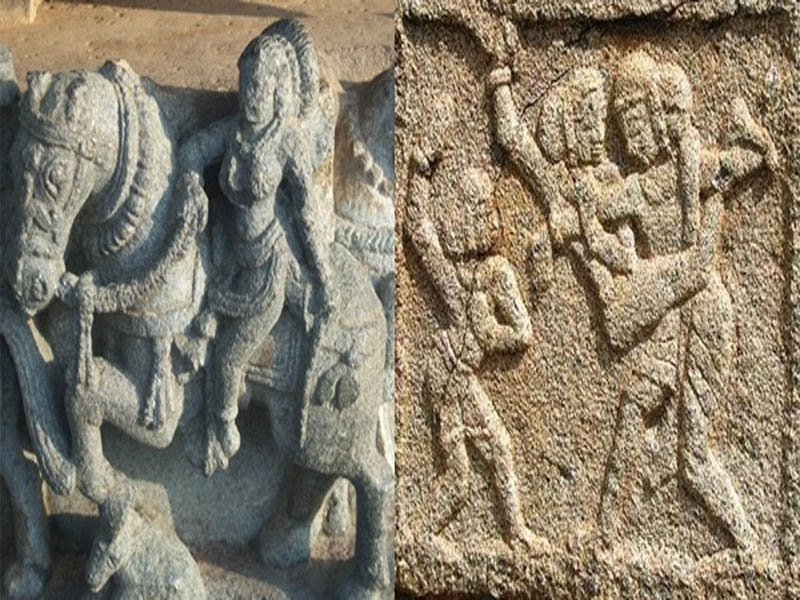In the recent times, sports have become an integral part of our nation’s culture and is rapidly becoming the part of our lifestyle. Sports is one field which breaks the barriers of gender. Sports only values pure hard work and talent. Women’s involvement in sports can be dated back to ancient times. It showcases how a recreational activity soon turns into a definite refined sport.
The history of sports dates back to the Vedic era. In Vedic era there were well defined values like Mantra, in Atharva Veda, saying “duty is in my right hand and the fruits of victory in my left”. Physical perfection has been an integral part of the Hinduism during the era of Rig Veda, Ramayana, Mahabhatrata men of certain stature were expected of well-versed in chariot racing, archery swimming, hunting etc. Lord Krishna used an impressive discus or Sudarshanchakra, Arjuna, Bhima two of the mighty Pandavas excelled in archery and weight lifting respectively.
According to excavations at Harappa and Mohenjodaro, weapons associated with war and hunting exercises during the Indus valley civilization (2500-1550 B.C.) included bows and arrows, daggers, axes, and maces. Additionally, these weapons of war were used in sports arenas, such as the javelin (toran) and discus (chakra). In addition to men, women also used these devices. Other outdoor games included Chaugam, now known as polo, sikar (hunter’s game), jhula, and jal-krida (water sports).
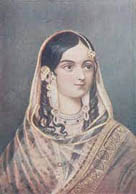
Women, excelled in sport and the art of self – defence, and were active participants in games like cock – fighting, quail – fighting and ram – fighting. Whereas, the advents of the goddesses Durga and Kali are also considered as skilled warriors and played an invincible role in the warfare. Women took equal interest in sports as men as seen through our history. The women were seen in the same light as men when compared to physical strength and mental alertness. Therefore, there have been several references of female warriors, who have accompanied kings to the battlefront. One of them was Queen Rudrama Devi of Warangal; who not all fought the battles but also trained her army in a particular style of martial art. Similarly, Chand Bibi of Ahmednagar, Begum Hazrat Mahal, Azizum bai who fought with Mughals and list goes on from Raziya Sultana, Laxmi Bai to Kittur Chennamma, Saint Mai Bhago, a female warrior from the Sikhs were all well trained and equally talented.
In and around 975 B.C. the love for chariot-racing and wrestling was common in both in India and Greece, where Olympic was first introduced. Having said that, in India sports martial arts like Silambam, Wrestling, Kalari etc, played an important role throughout the history.
Silambam is an ancient martial art from Tamil Nadu, where it emerged in around 1000 years BCE. It was practiced with bamboo stick with its length equivalent to their heights, there were many variations in this. This was a popular sport among women, as younger women were imparted training to defend themselves with staves, both as a ritual and an emergency. It was observed that during the Vijanagara battle this skill was frequently used by females.
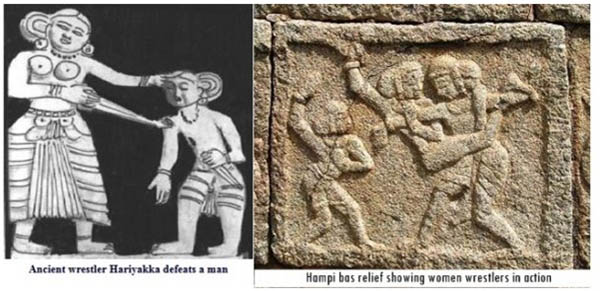
Kalari Payattu is a holistic discipline that enhances your physical power, mental agility and spiritual development. It is believed that Kalaripayattu is inspired by the raw strength of animals and also named after them.
Kalari Payattu, is very similar to Karate a form of present-day martial art. Those who practice it have to develop acrobatic capabilities, when using swords or knives to attack their adversaries, and even an unarmed exponent can be a force to reckon with.
With the advent of Buddhism, this art form spread to the Far East countries. Buddhist monks who travelled far and wide, mostly unarmed, to spread the teachings of the Buddha, accepted this form of self – defence, against religious fanatics, with alternatives that were suitable to their philosophy of non- violence.
Meenakshi Gurrukal , is a prime example from modern day who is well versed with this art and she even defeated her male opponents at the ripe age of 76.
Although wrestling is believed to have evolved in ancient Greece and the Roman Empire, there is concrete evidence that the sport was also contested in ancient India. In fact, back then, it was called ‘Malla-Yuddha‘. It is believed to have been practiced at least as early as the 5th millennium BC. In fact, there is an encyclopedia on the sport by the name Malla Purana. Developed in the 13th century, it was the modern wrestling’s precursor. Whereas back then Hariyakka, she was the daughter of Madigauda a wrestler. As she challenged and avenged her father’s death by an opponent and was killed in the bout.
Through Sports, one learns much about working together with others toward a common goal. It is a dynamic social force in our culture. Sports have become an integral part of current human race. However, sport for Indian women was largely recreational, Whereas, hundred years history has witnessed that women have broken chains and broken boundaries, proving their mantle and leaving a legacy of inspiration for us.
××××××××××××××××××
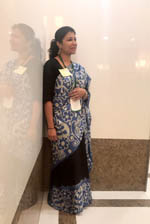 |
Simran Kaur Research Scholar /Artist |
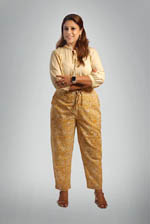 |
Deepti Singh Founder English Hub |


